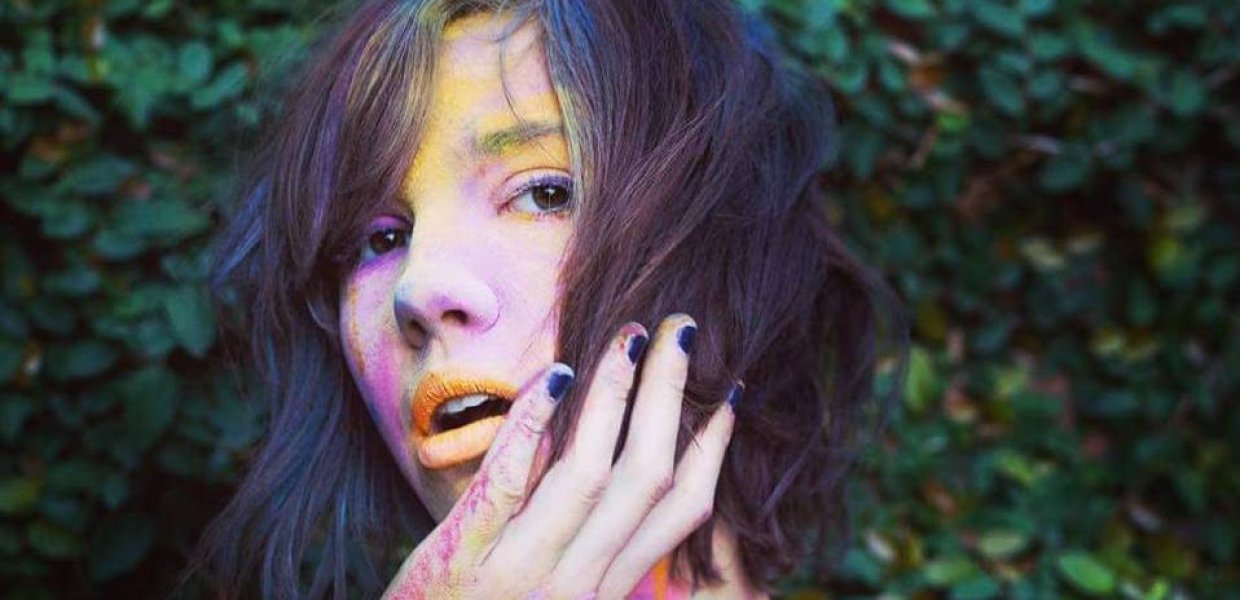This article was originally published by the Ms. Magazine blog.
By Kelby Vera, Arts MSJ student, 2016
Punk shows, bass guitars, tattoos and cigarettes: Quincy Larsen is a long way from her Mormon childhood in Utah.
Larsen is what pollsters call a “none,” someone without religious affiliation. Nones are not all atheists. In fact, 37 percent describe themselves as “spiritual but not religious.” Larsen and other nones under 30 reflect a massive shift in the American religious landscape.
Like most of this emerging demographic, Larsen’s path is much more complicated than a simple shift from believer to skeptic. She also resembles many of her peers because she has found identity, meaning and purpose—the foundation of religious faith—in music.
Larsen was raised in the mid-sized, suburban town of American Fork, Utah, about an hour outside of Salt Lake City. The community was predominantly Mormon, and she found the pressure to be a “good Mormon” oppressive.
“When you get to ages 11 to 18, you’re invited to young women’s group where you have to stand and recite the young [women’s] value code,” Larsen recalls. “One of [the values] is… ‘I will only listen to music that is pleasing to my heavenly father.’” But Larsen was—and is—a fan of punk music, which is not exactly considered “pleasing” to God. Listening to punk rock was part of her early rebellion against the church, and she says that the fact that the other mothers in the ward talked about the evils of punk “just made it more interesting.”
Larsen’s first introduction to punk was happenstance, courtesy of SpongeBob SquarePants; an early episode of the cartoon features the lead singer of the legendary punk outfit The Cramps. Larsen was instantly captivated by the throttling rhythm and warped singing, so she went searching for more.
“I ended up going to my library at school and I Googled [The Cramps]. I was really drawn to [Poison Ivy] because I thought ‘Whoa, girls don’t play guitar’ and she was overtly female and so raw.”
Seeing a woman wield a guitar excited Larsen. She immediately immersed herself in art and music, but faith and family told her it was unacceptable.
For her mother, the more devout of her parents, Larsen’s new musical obsessions were unacceptable. “I remember I had built this amazing collection of all this ska music, rockabilly music. I was listening to the Toy Dolls in my room and she came in and was like ‘What are you listening to?’ and I’m like ‘Oh it’s ska, Mom!’ and she was infuriated.”
“She thumbed through my CDs and then lands on … ‘Reign in Blood’ [an album by the metal band Slayer] and looks at [my CDs] and right in front of me she starts screaming, yelling, takes all of them one by one: snap, throw, snap, throw. I’m crying, but when she got to my Cramps CD, when she got to ‘Good Music for Bad People,’ I was like, ‘not that one, not that one!’”
The incident was traumatic. How could the music that brought her so much joy be considered evil? She soon realized the Mormon church was no longer her home.
After high school, Larsen left her town for Salt Lake City, eager to escape her family’s religious culture. Though she sometimes fought bitterly with her mother, their relationship eventually began to heal—but she remained uneasy with the shadow the church still cast over life.
“There was a big Mormon temple in the dead center of Salt Lake City—that’s the church headquarters. I’d be smoking on the street and missionaries would come up to me and hand me a Book of Mormon and a pamphlet, and I [said] ‘I’m done, I’m done.’”
She soon moved to Austin where she developed as an artist, then, in 2014, Larsen moved to Los Angeles. She found the support to grow as a musician there, yet judgments and self-doubt from her devout childhood still bubbled up.
“I guess I was a little scared to actively pursue music because I didn’t think I could do it or I was afraid of like what the f**k are my parents going to think?” she says. “It took a while and there was a lot of fear and a lot of s**t to trudge through, but you can get there. It’s possible.”
Larsen’s leap of faith paid off. She now plays bass in Miss Jupiter, a high-energy blend of psychedelia that performed at last year’s Echo Park Rising Festival. Her other group, Future Shoxxx, is a potent duo of noise, synths and cassette tapes.
According to Future Shoxxx bandmate Sharif Dumani, “Quincy’s love of music is contagious because of her curiosity and openness to the possibilities in sound.”
Larsen finds strength in herself and her craft. “It’s as simple as feeling like I can be myself and not be judged,” she says. “I don’t feel ashamed and I don’t feel like the wrath of God is going to come down at any moment and hammer me into the asphalt! But that’s how I found my purpose in life: it’s feeling like I can be comfortable in my own skin, like what I like and do what I want to do.”
